Carbon Fiber Machining: More You Should know
What is Carbon Fiber?
We know polymer is commonly referred to as graphite fiber, and that is carbon fiber. It is a very lightweight material despite its extreme durability. The carbon fiber reinforced polymer has a strength that is five times that of steel and stiffness that is twice as great.
As carbon fiber is lighter than steel and more rigid and firm than steel, it makes it a perfect option in the manufacturing process of products.
Thomas Edison invented carbon fibers in 1879 when he roasted cotton threads or bamboo silvers at high temperatures, turning them into an all-carbon-fiber filament. Carbon fibers were created Just west of Cleveland, Ohio, high-performance in 1958.
Despite being inefficient, these fibers contained roughly 20% carbon and had low strength and stiffness qualities. Scientists realized Carbon fiber's strong potential in 1963 at a British research lab.

Table of Content
■ Advantages for Carbon Fiber and Machining
■ Standard methods for the process of Carbon Fiber
■ Considerations for Carbon fiber CNC Machining
■ Applications for Carbon Fiber
■ How can Worthy Hardware help you with your carbon fiber machining parts?
How to make Carbon Fiber?
A chemical and mechanical process produces carbon fiber. We keep the machining carbon fiber composites from burning & to cut carbon fiber sheets, large strands of fibers are drawn and heated to a very high temperature without being exposed to oxygen.
The carbonization process begins when the atoms inside the fibers vibrate vigorously, expelling most non-carbon particles. Only a few non-carbon particles remain, leaving a carbon fiber made up of long, closely interlocked chains of carbon atoms.
We know Spinning, carbonizing, stabilizing, treating the surface, and sizing are common sequences that we use to make carbon fibers from polyacrylonitrile.
We make Carbon fiber from thin, strong carbon crystalline threads that we use to reinforce materials. We can consider a single strand of carbon fiber because it is as thin as a single human hair and gives it strength; it is twisted together like yarn.
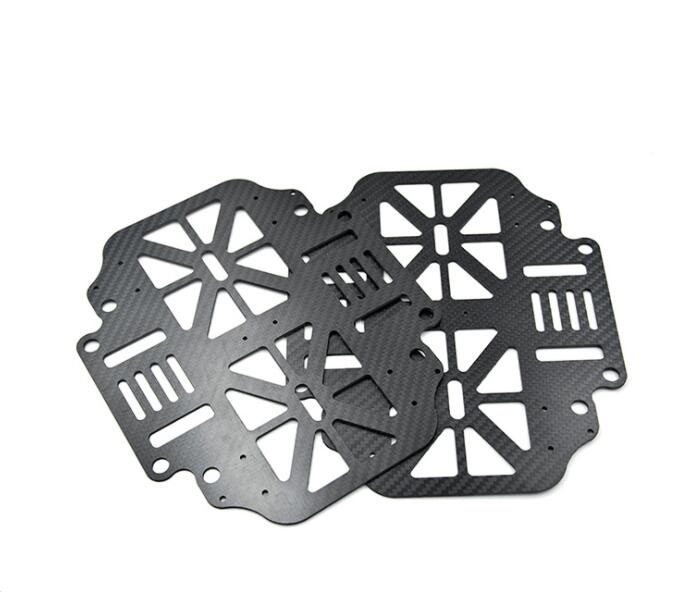
After that, we can weave the carbon fiber into cloth, and if you demand a permanent shape, it can be stretched over a mold and coated in resin or plastic. We do it in order to make the form long-lasting.
Carbon fiber is not just strong but also:
- It is rigid to a high degree.
- possesses a high tensile strength.
- The weight-to-strength ratio is low.
- Has a high level of chemical resistance
- Is the temperature tolerant of high temperatures
- It has a low thermal expansion coefficient
- Therefore, we widely use carbon fiber in numerous industries, including aerospace, automotive, military, and recreational uses.
Advantages for Carbon Fiber and Machining
When defining the qualities of carbon fiber, it is necessary to compare it with other materials used in component manufacture to fully appreciate the benefits. Metals are apparent candidates for producing components, with aluminum alloys, titanium alloys, and steels serving as competitors to carbon fibers.
We must consider the connection between stiffness and strength to weight for structural applications as a designer.
Cost is significant, but the material's performance usually outperforms the cost factor during the vehicle's lifetime in automotive applications. The specific stiffness ratio of the three metals is roughly 25 (GPa / g/cm3).
Depending on the orientation and kind of reinforcement, carbon fiber composites range from 66 to 150 (GPa / g/cm3). This is a factor of three to six times better.
The characteristics window of different alloys is considerable in terms of strength. Still, given the much lower density of carbon fiber (1,5 g/cm3) compared to metals (aluminum 2,8, titanium 4,5, and steel 7,8 g/cm3), it is clearly superior most of the time.
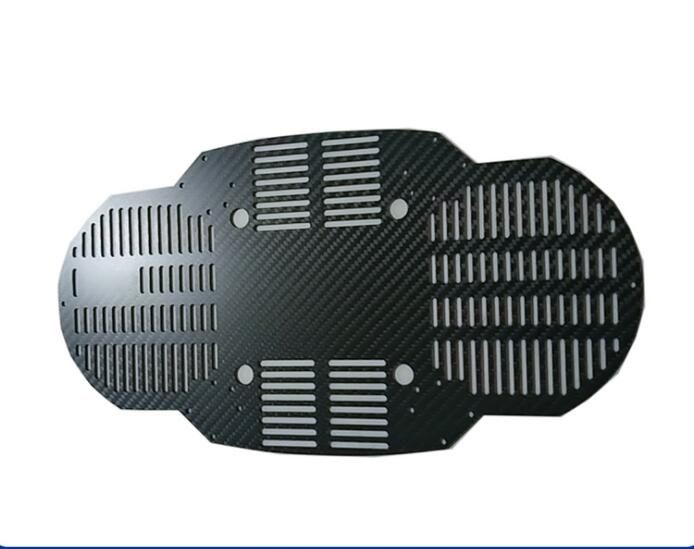
The designer must know specialized composite material design methodologies and tools, such as FEA, to get the most outstanding performance from the material (Finite Element Analysis).
Worthy Hardware has the Nastran FEA program ability to model nonlinear and orthotropic materials. These characteristics are necessary when researching composite materials.
In contrast to metals, which are usually isotropic, composite materials have variable features along each of their primary axes. As a result, structural simulation becomes more difficult.
- Strength
- Stiffness
- Corrosion resistance
- EM Transparency
- Attractiveness
- Low density
- Fatigue life
- Thermal conductivity
Standard methods for the process of Carbon Fiber
The precursor is the raw material used in machining carbon fiber sheets. Polyacrylonitrile accounts for almost 90% of all carbon fibers manufactured (PAN). The remaining 10% is made out of a rayon or petroleum pitch.
All of these substances are organic polymers, which are made up of long chains of molecules linked by carbon atoms. The actual content of each precursor differs from one business to the next and is usually kept under wraps.
A number of gases and liquids are employed in the cutting carbon fiber manufacturing process. Some of these materials are made to react with the fiber in order to achieve a particular effect. Other materials are made to not respond with the fiber or to inhibit specific reactions. Many of these process materials, like their predecessors, have unique compositions.
Carbon fibers are produced in a process that involves both chemicals and mechanical properties. The precursor is made into long strands or fibers, which are then cooked at a very high temperature without oxygen. Without oxygen, the fiber can't burn.
Instead, the high temperature makes the fiber's atoms move around quickly, which gets rid of most of the atoms that aren't carbon. Thus carbonization is the process that turns fiber into long chains of carbon atoms that are tightly woven together.
Only a few atoms that are not carbon are left. Let's look at how house CNC machining works with carbon fiber and the process of cutting carbon fiber parts.
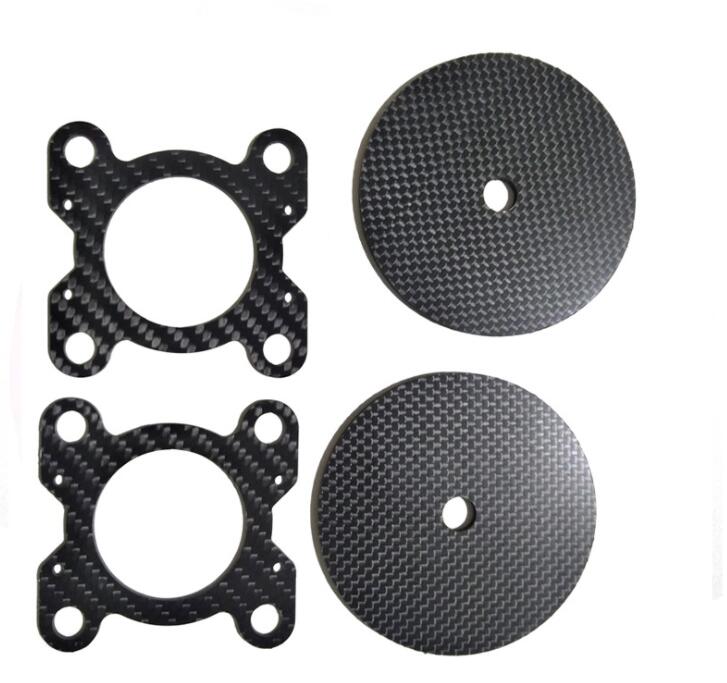
CNC turning
CNC turning is known as the most common CNC machining procedure in the manufacture of carbon fiber composite materials, and it's primarily utilized to achieve preset dimensional tolerances on cylindrical surfaces.
For turning carbon fiber, some of the possible tool materials include cubic boron nitride, ceramic, polycrystalline diamond, and cemented carbide. Surface quality and tool life in CNC machining are heavily influenced by process parameters such as feed rate, cutting speed, depth of cut, and so on. Tool properties such as tool geometry and material must also be considered.
Worthy Hardware, as one of China's leading CNC turning service providers, can create a wide range of low-cost carbon fiber materials parts. Carbon fiber CNC turning parts, one of the most prominent engineering materials, will not be overlooked.
Worthy Hardware creates custom precision CNC carbon fiber parts based on customer requirements, samples, or drawings. Surface spraying, electroplating, metal welding, hot pressing, and adhesion are all possible with our CNC Turning carbon fiber precision components, which are widely utilized in machinery, vehicle, electronic appliances, instruments and meters, textile, and construction industries.
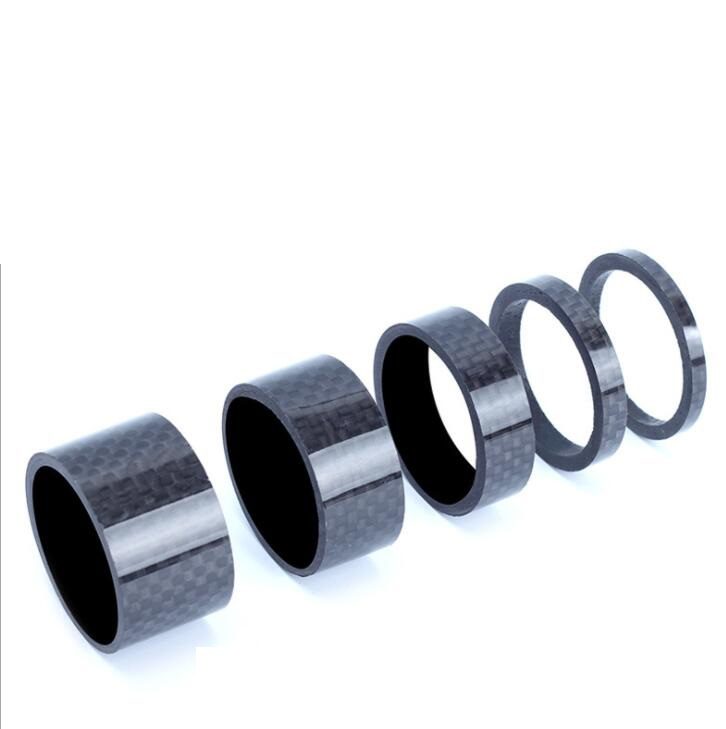
The CNC turning of high-quality carbon fiber precision parts is an area of expertise for our professionals & they have proof of experience in the field. Our professionals have years of personal experience and knowledge in CNC turning high-quality carbon fiber precision parts.
CNC milling
Carbon fiber composites are often machined with a router; however, ordinary metal machining methods can also be employed. Carbon fiber composites demand more incredible spindle speeds but lower feed rates than metals.
The feed rates must be adjusted to reduce the amount of heat generated in the workpiece during machining. Because carbon fiber has a limited thermal conductivity and no chips to help dissipate heat during machining, the majority of the heat remains in the product.
The heat generated by cutting can harm the resin. Because coolant may not be allowed while machining carbon fiber composites, the tool path and tool must be employed to keep the part cool while milling.
Furthermore, the breaking of the fibers causes significant abrasion on the cutting tool, necessitating the use of specific tools for machining carbon fiber composites.
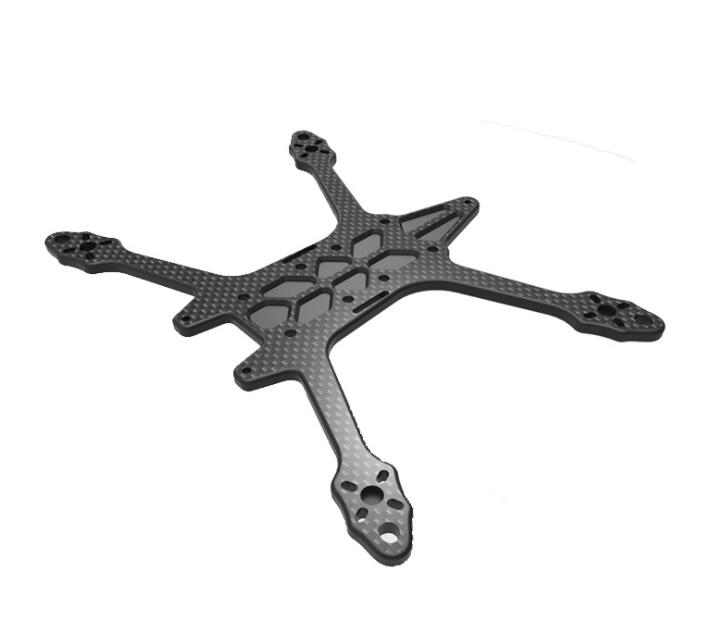
CNC Drilling holes
Drilling carbon fiber composites is a problematic machining technique. During machining, composites are made up of layers of material that can readily splinter or delaminate.
Drilling speed must be regulated according to the hole's size and depth. Drill bits made specifically for carbon fiber assist prevent delamination during the drilling process.
The High-Z router creates precise counterbores in drill holes that might alternatively be made with a drill and countersink. However, drilling holes of identical depth and spacing is problematic. A computer-aided machine can drill the holes more quickly and accurately than a manual instrument.
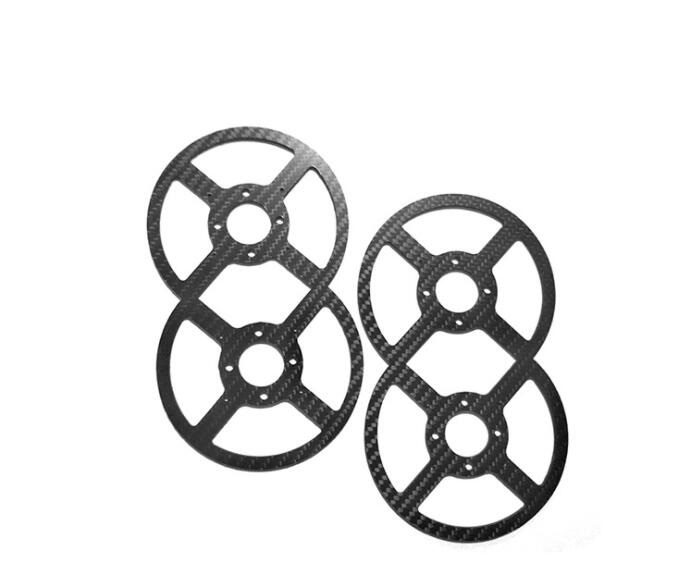
Grinding
A grinder is a step up from a rotary cutting tool. If you work with metal or do welding, you are well aware of the capabilities of a grinder.
Cutting straight lines in carbon fiber is also a breeze with it. This form of cutting is best done with a regular metal cutting abrasive wheel. Always take caution when using a grinder; it is vital equipment that should be used with caution and safety clothing.
Over safety glasses, a face shield is a recommended addition.
Considerations for Carbon fiber CNC Machining
Consider The Cutting Force and Deformation
Cutting force usually is the resistance of the material to the cutting tool's entrance. Various cutting procedures, such as turning, milling, drilling, and so on, conducted in manufacturing machines —often CNC – have different force directions and amplitudes.
These extremely dynamic cutting forces may be measured and evaluated, allowing for process optimization.
Monitoring these forces
It is well understood, as it allows you to better understand the behavior of tools and materials during the machining process by studying wear behavior and the impact of this wear on cutting forces or even determining the machinability of particular materials.
Choose red wear-resistant, heat-resistant, and non-abrasive machining tools.
Working with composites is different than working with metals because instead of chipping away at the material you're machining, you're moving through the many layers of the composite, which are all distinct materials.
Resins commonly employed in matrix layers, for example, tend to break off at the edges, whereas reinforcing carbon fibers may be chopped or fragmented
Furthermore, just as machining high-temperature alloys necessitates different tools, cutting speeds, and feed rates than machining more common metals, each type of composite material necessitates unique consideration prior to machining
We need special tools to employ composites in machining because most composites are pretty abrasive and quickly wear out devices.
To avoid delamination, which contributes to rapid tool wear, an exceedingly sharp edge is required. Finally, because heat isn't taken away in chips like it is in most pure metals or minerals, the tools and materials tend to heat up. Another foe of Tool Life is heating
Applications for Carbon Fiber
Nearly anything. A carbon fiber pint glass can be created if you want one. With carbon fiber and other composites, Worthy Hardware has developed a variety of shapes.
Robotics and automation
Facilities that integrate industrial automation into their manufacturing processes attempt to improve efficiency by increasing speed and precision.
Reduced weight and enhanced stiffness of robotics, particularly robotic end effectors, are frequently the most direct ways to attain these goals.
Lightweight end effectors result in faster production line speeds, more precision, lower motor and actuator loads, and increased reliability.
Carbon Fiber Tactical Bridges and Ladders
Carbon fiber composites are much better than other materials when it comes to making high-tech tactical carbon fiber ladders and bridges.
In collaboration with the military and law enforcement, Worthy Hardware has made a wide range of lightweight tactical carbon fiber ladders, platforms, and bridges.
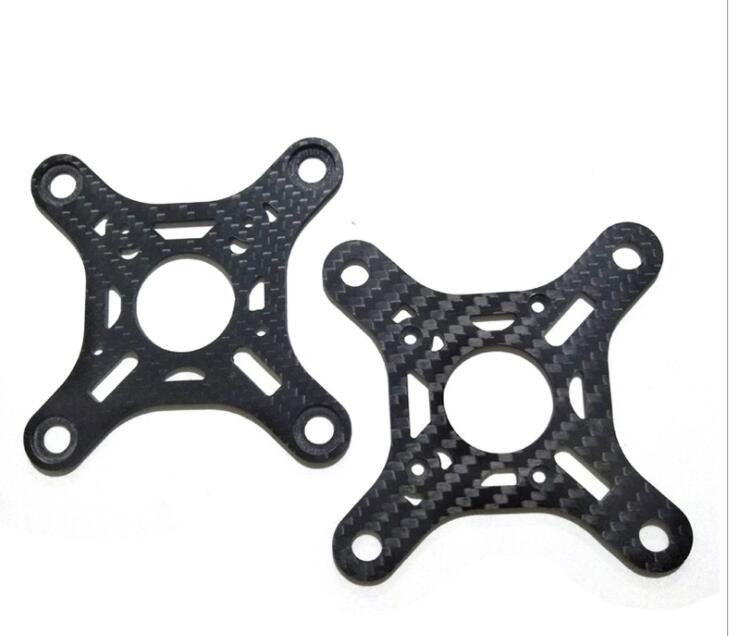
Carbon Fiber in Musical Instruments
People are interested in how carbon fiber composites can be used in music and acoustic resonance. We have worked with some of the most well-known instrument builders and researchers in the world.
Aircraft Systems
Worthy has partnered with several companies to assist in developing and producing famous air & ground vehicles
Also, Combining decades of experience in structural design, composites, and aerodynamics, we provide support to customers in the areas of basic configuration design and analysis, prototyping, component optimization, and production manufacture.
We offer the skills and infrastructure to support your project. We have a history of projects ranging from military ground robotics to lighter-than-air vehicles.
How can Worthy Hardware help you with your carbon fiber machining parts?
We offer carbon fiber trimming services for various carbon fiber parts for industry, such as carbon fiber grippers, and robotic machine arms that require high precision, and durable material, thanks to our extensive knowledge (CFRP).
Our turn milling machining parts are currently shipped to the United States, Canada, Australia, the United Kingdom, Germany, France, South Africa, and many other nations worldwide. We are ISO9001-2015 certified, and SGS registered.
Our bespoke CNC turn-milling machining service produces durable and economical parts that suit your standards for the automotive, medical, aerospace, electronics, food, construction, security, marine, and other industries.
Send your query or submit your drawings as soon as possible to receive a free quote. Contact us for a Rapid Quote or learn how our people, equipment, and tooling can deliver according to your budget for your turn-milling machining project.
Choose Worthy Hardware and get service updates every time there are some made. Services updates are critical as you will be able to find something new every time, they bring up recent service updates. Also, you will get fast delivery at your doorstep.
We deliver machined aluminum parts and manufacturing metals used in CNC milling for aircraft and medical industries. The range of the types of machined aluminum parts is varying and vast.
Using CNC machine, the material and aluminum parts range from aircraft and medical to workshop and food industry.
Worthy Hardware is a CNC manufacturing and sheet metal fabrication company,including CNC machining services,CNC milling services, CNC turning services, laser cutting services and stamping services.Call us +86-76989919645 or email us [email protected] for more discounts for your projects.
